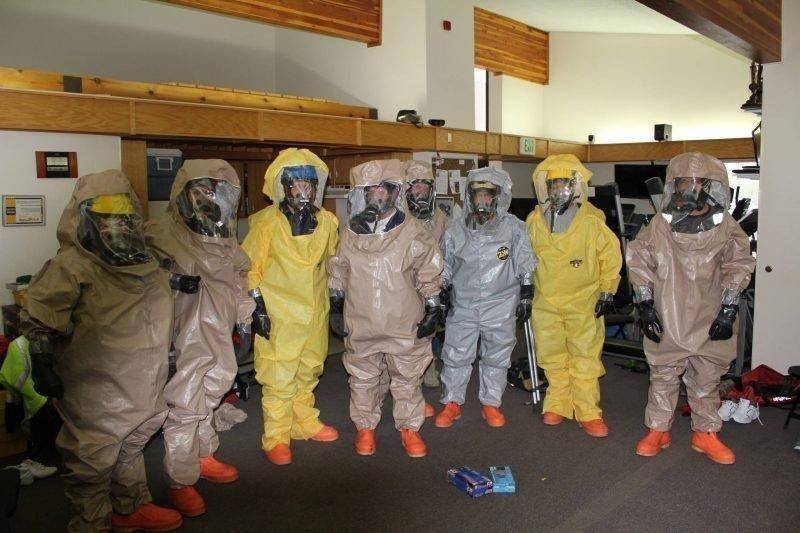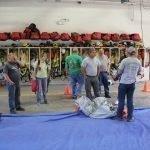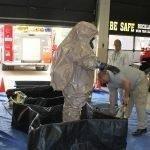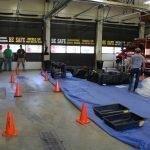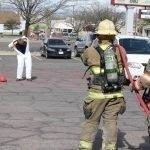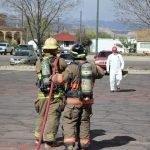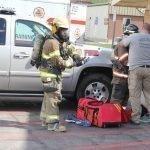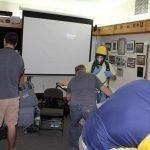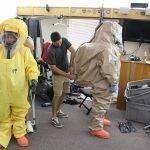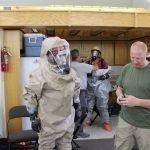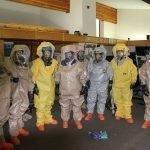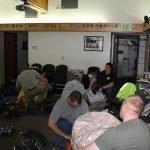Press Release
Most people view firefighters as only fighting fires; however, the scope of their training goes way beyond fires. Whether it’s a structure fire, vehicle accident, medical emergency, rescue situation or a hazardous materials release, fire departments are required to develop and train in response techniques. Most citizens have come to expect their fire department to be prepared to handle any crisis. This places a huge responsibility for firefighters to be prepared for any emergency. A few months ago, many of our local volunteer firefighters receive substantial training in how to deal with a hazardous materials spill or leak.
Millions of gallons of hazardous materials pass through our local communities each year on our highways and railroads. While these hazardous materials are generally safe when they remain in their containers, highway and rail-line accidents often result and release these chemicals. Your local fire departments are tasked with responding to these incidents in an effort to protect the lives of our residents, prevent the further spread or release of the chemicals, and protect private and public properties.
A hazardous material is essentially any item that can cause harm to life or the environment when released from its container. There are thousands of chemicals used in the United States and hundreds of new chemicals are created each year. Expecting firefighters to know all chemicals and their specific chemical properties is not possible. In order to assist firefighters in responding to hazardous materials incidents, the U.S. Department of Transportation has established guidelines in marking and identifying hazardous materials. Hazardous materials are separated into nine basic hazardous classifications. These classifications divide hazardous materials into groups of similar hazard risks and general chemical properties. Firefighters can establish specific response plans based upon each hazardous classification.
Carbon County is a major transportation corridor for large quantities of hazardous materials traveling through our state. Materials such as sulphuric acid, hydrochloric acid, chlorine, ammonia, organic peroxides, ethanol, pesticides, flammable liquids and even radioactive materials are just a few of the thousands of pounds of hazardous materials traveling through the heart of our communities every day. Fortunately, accidents involving these hazardous materials are uncommon; however, when these accidents occur, your local fire departments are called upon to help deal with the results of these incidents. Hazardous materials incident training is divided into three categories; hazardous materials recognition, response and remediation.
Recognition of hazardous materials is an essential part of firefighter training. Shippers are required to use specific containers and use standardized placards whenever they ship hazardous materials. Firefighters are required to learn about the types of containers used and how to identify them in a hazardous materials incident. Fire crews are also trained to recognize the types of informational placards and papers used by industry when shipping hazardous materials. Part of their training is focused on obtaining information from the chemical manufacturer’s material safety data sheets (MSDS), which helps responders know the types of risks involved with the product and how to best deal with the spill. Once the type of product spilled is identified, firefighters are trained in what actions need to take place.
Response to a hazardous materials incident requires a great deal of specialized training. Response guidelines and techniques are an integral part of any fire department activity. Once an incident has occurred and the firefighter has obtained sufficient information on the product or its hazard classification, defensive actions can take place. Firefighters are trained to perform multiple defensive actions in order to contain a spill and prevent its spread. Once the spill is contained, additional resources are generally called to assist. It’s important to know that firefighters are not trained in technical spill cleanup and mitigation. The owner of the product or shipper is generally responsible to ensure the spill or leak is appropriately cleaned up and the environment is returned to its original condition. Our local health department monitors the cleanup efforts and ensures the public and environment is protected. While firefighters are not responsible for hazardous materials cleanup, they often assist public and private companies in the cleanup efforts.
One specific remediation procedure in which firefighters receive in depth training in is the decontamination of people who have been exposed to hazardous materials. Firefighters are trained to perform emergency decontamination of victims at the scene. The theory in emergency decontamination is to remove as much of the hazardous material from the victim’s body as quickly and as safely as possible without contaminating others. The less exposure an individual has to a substance the less chance there is of harmful effects to their body. Firefighters are also trained to perform technical decontamination of hazmat technicians and specialists who wear specialized clothing and mitigate a spill directly. This process is an in depth procedure to eliminate hazardous materials from a hazmat technicians protective suit prior to removing the protective clothing. This helps ensure the responders are not needlessly exposed to hazardous materials that may have been deposited on their protective suits while they were mitigating a spill.
You may or may not be aware but a few of our local firefighters are volunteers. In their training process, our firefighters devote hundreds of hours to learning the skills they need to appropriately respond to your emergencies. This rigorous training and testing procedure is the same process as full-time career firefighters, yet they still need to hold down non-firefighter jobs. Our volunteer firefighters sacrifice their time and energy because they are community minded and want to keep everyone safe; after all, they are your friends and neighbors. While they do receive some compensation for their service, it doesn’t come anywhere close to fully compensating them for the time they spend in training and emergency response. Most firefighters end up using much of their vacation time to receive training needed to respond to emergencies. Often times, the only reward our volunteers have is the good feeling they receive by being able to help someone in need.

